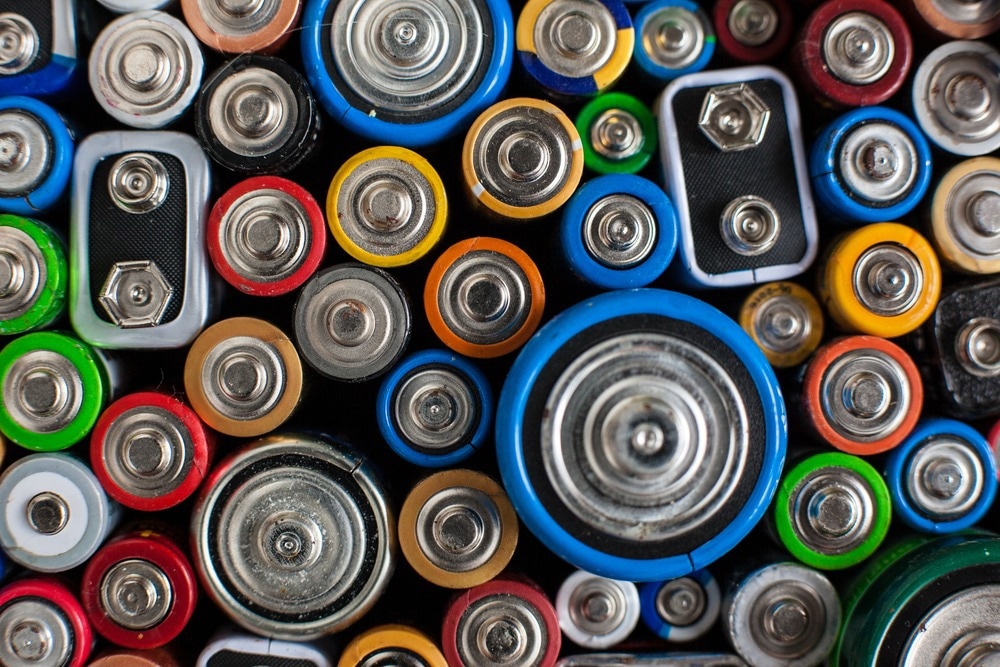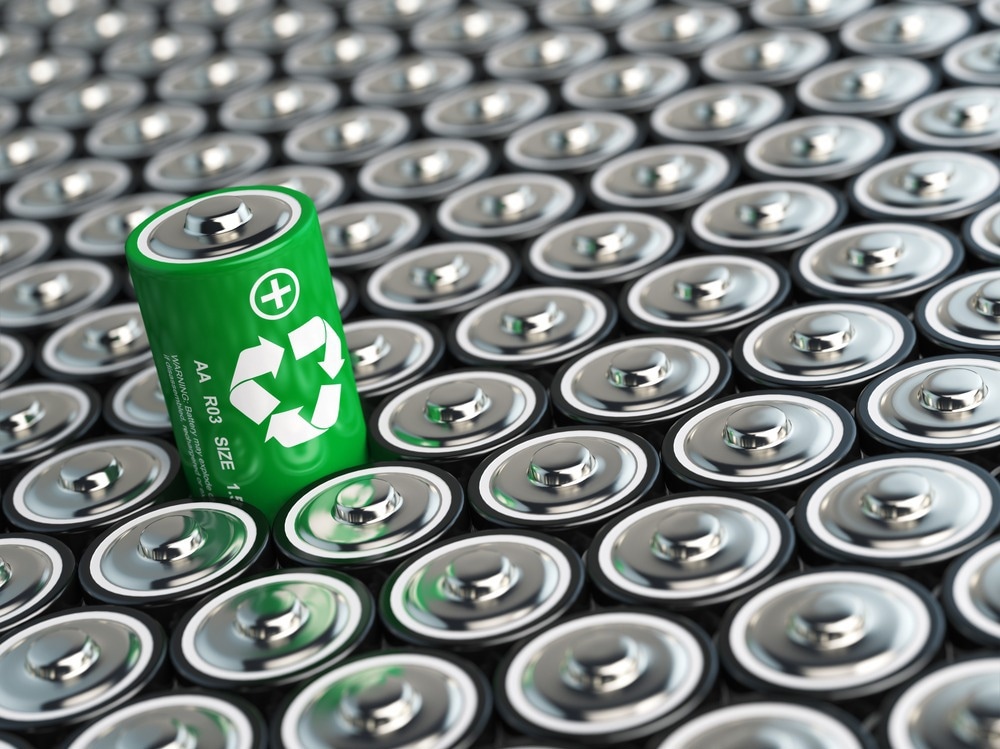Battery technologies and electrification are meant to reduce greenhouse gas emissions from fossil fuels, but there are challenges with increasing demand, an unsustainable supply chain, and the need for sustainable capacity. Redwood Materials is trying to address these issues through advanced material recycling technology and an innovative supply chain.

Image Credit: Aksana Tsishyna/Shutterstock.com
Climate Change, Challenges of Battery Economics, and Logistics
The need to reduce reliance on fossil fuels and combat climate change has made it necessary to shift towards electrification, and batteries are a key part of this solution. These batteries, especially lithium-ion batteries, are frequently found in many different types of electronic equipment and automobiles.
However, there are several challenges that must be overcome, including the significant increase in demand for lithium-ion batteries (projected to grow by 500% in the next decade), an unsustainable supply chain that involves transporting materials over long distances, and a gap in capacity, as the world is estimated to require 300 terawatts of battery capacity to achieve sustainability.
What is a Circular Battery Supply Chain?
A circular battery supply chain refers to a system in which used batteries are collected, repaired, and sold again instead of being thrown away. This method aims to decrease the negative environmental effects of battery production and disposal and to increase the lifespan of battery resources.
Some international institutions, like the European Commission, have invested in the growth of circular battery supply chains through funding research and development with the goal of creating a sustainable and successful battery industry in Europe.
The outlook for the development of circular battery supply chains is generally positive due to the increasing demand for batteries and the need for environmentally friendly and efficient ways to manage their production and disposal.
Adopting a circular economy, in which resources are used in a sustainable manner and waste is minimized, can reduce greenhouse gas emissions and pollution, decrease reliance on mining non-renewable energy sources, protect natural habitats and biodiversity, and reduce the amount of waste in landfills.
Redwood Materials, founded by former Tesla CTO JB Straubel, has a goal to create a sustainable, closed-loop system for battery production and recycling.
Redwood Materials' Advanced Material Recycling System
Advanced material recycling is a key technology used by Redwood Materials in the recycling process. The process begins with the collection of used batteries from various sources such as electric vehicles and consumer electronics. These batteries are then transported to Redwood Materials' facilities where they are sorted, cleaned, and disassembled.
Batteries are mechanically shredded and treated with chemicals that break down their components into individual elements. The resulting materials are cleaned and refined to remove impurities before being used in the production of new batteries.

Image Credit: Maxx-Studio/Shutterstock.com
The individual components, including the cathode, anode, and electrolyte, are separated and valuable materials like cobalt, graphite, lithium, and copper are extracted through pyrometallurgical and hydrometallurgical processes.
The lithium is extracted through solvent extraction while the cobalt and graphite are extracted through hydrometallurgy. The extracted materials are then refined and processed into new battery materials. Lithium is used to create lithium-ion batteries and cobalt and graphite can be used in the production of other types of batteries. Copper is processed into a copper foil for use as a current collector in battery electrodes.
Benefits of Redwood Materials' Advanced Material Recycling System
One of the key benefits of this advanced material recycling process is that it allows Redwood Materials to recover a much higher percentage of the materials used in the original battery.
In addition, the company's processes are designed to be highly efficient, with low energy and water consumption. This makes the circular supply chain more sustainable than traditional approaches to battery recycling.
Other Technologies Used by Redwood Materials
In addition to its advanced material recycling technology, Redwood Materials also employs a number of other technologies to support its circular battery supply chain. For example, the company uses predictive modeling and data analytics to optimize its recycling processes and maximize the recovery of valuable materials.
It also employs advanced logistics systems to track and manage the flow of materials throughout the supply chain.
Recent Partnerships and R&D Investments
The company, valued at $3.7 billion in 2021, has also formed partnerships with Ford and other Original Equipment Manufacturers such as Proterra, Korea's L&F, Volvo, and Panasonic. The goal is to ensure that raw materials are used efficiently and that electric vehicle batteries are properly recycled once they reach the end of their life.
Recently, Redwood Materials announced that its next Battery Materials Campus would be located in South Carolina. At this campus, the company will recycle, refine, and manufacture anode and cathode components for EV batteries on over 600 acres. The project is expected to create more than 1,500 jobs and invest over time $3.5 billion in the local community.
Conclusions
Circular battery supply chains are a major advancement in sustainable battery management. By utilizing advanced material recycling and other technologies, it is possible to create a closed-loop system for the life cycle of batteries, minimizing the need for resource-intensive mining and waste disposal.
This not only has a positive impact on the environment but also helps to ensure a more stable and secure supply of battery materials in the long run. Recycling processes are highly efficient and more environmentally friendly, as they allow for the recovery of valuable materials without the use of harmful chemicals or mining.
They also help to decrease the number of waste batteries that end up in landfills, which can be damaging to the environment.
There is an important growth prospect in the industry too as the revenue forecast for 2030 is 19.9 billion USD. The growth rate is estimated to be a compound annual growth rate of 7.6% from 2022 to 2030.
Overall, a circular battery supply chain is an innovative and sustainable solution for recycling used batteries and has the potential to greatly reduce the environmental impact of battery production.
More from AZoM: Britishvolt - Plans to Create 30GWh Battery Gigaplant
References and Further Reading
Bellan, R. (2022). Redwood Materials partners with Toyota to recycle batteries in US. [Online]. TechCrunch. URL https://techcrunch.com/2022/06/21/redwood-materials-partners-with-toyota-to-recycle-batteries-in-us/ (accessed 12.19.22).
Enuh, B.M. (2022a). Novel Material Replaces Cobalt in Li-Ion Battery Cathodes [Online]. AZoM.com. URL https://www.azom.com/article.aspx?ArticleID=22276 (accessed 12.19.22).
Enuh, B.M. (2022b). What Materials are Used to Make Electric Vehicle Batteries? [Online]. AZoM.com. URL https://www.azom.com/article.aspx?ArticleID=22142 (accessed 12.19.22).
Grandviewresearch (2022). Battery Recycling Market Size, Share & Trends Analysis Report By Chemistry (Lithium-ion, Lead Acid, Nickel), By Application, By Region, And Segment Forecasts, 2022 – 2030. [Online]. Grandviewresearch.com. URL https://www.grandviewresearch.com/industry-analysis/battery-recycling-market (accessed 12.19.22).
Lienert, P. (2021a). Ford, Redwood form “circular” supply chain for EV battery materials [Online]. Reuters.com. URL https://www.reuters.com/business/autos-transportation/ford-redwood-form-circular-supply-chain-ev-battery-materials-2021-09-22/ (accessed 12.19.22).
Lienert, P. (2021b). EXCLUSIVE U.S. battery startup Redwood Materials sets deal with Korea’s L&F [Online]. Reuters.com. URL https://www.reuters.com/technology/exclusive-us-battery-startup-redwood-materials-sets-deal-with-koreas-lf-2021-10-27/ (accessed 12.19.22).
Redwood Materials (2021). Announcing a $700M investment round | Redwood Materials. [Online]. URL https://www.redwoodmaterials.com/news/series-c-funding-700-million/ (accessed 12.19.22).
Redwood Materials (2022). Redwood Materials | Circular Supply Chain for Lithium-ion Batteries [Online]. Redwood Materials. URL https://www.redwoodmaterials.com/ (accessed 12.19.22).
Report, T.E. (2022). Redwood to build massive battery materials campus in South Carolina. The EV Report [Online]. URL https://theevreport.com/redwood-to-build-massive-battery-materials-campus-in-south-carolina (accessed 12.19.22).
Disclaimer: The views expressed here are those of the author expressed in their private capacity and do not necessarily represent the views of AZoM.com Limited T/A AZoNetwork the owner and operator of this website. This disclaimer forms part of the Terms and conditions of use of this website.